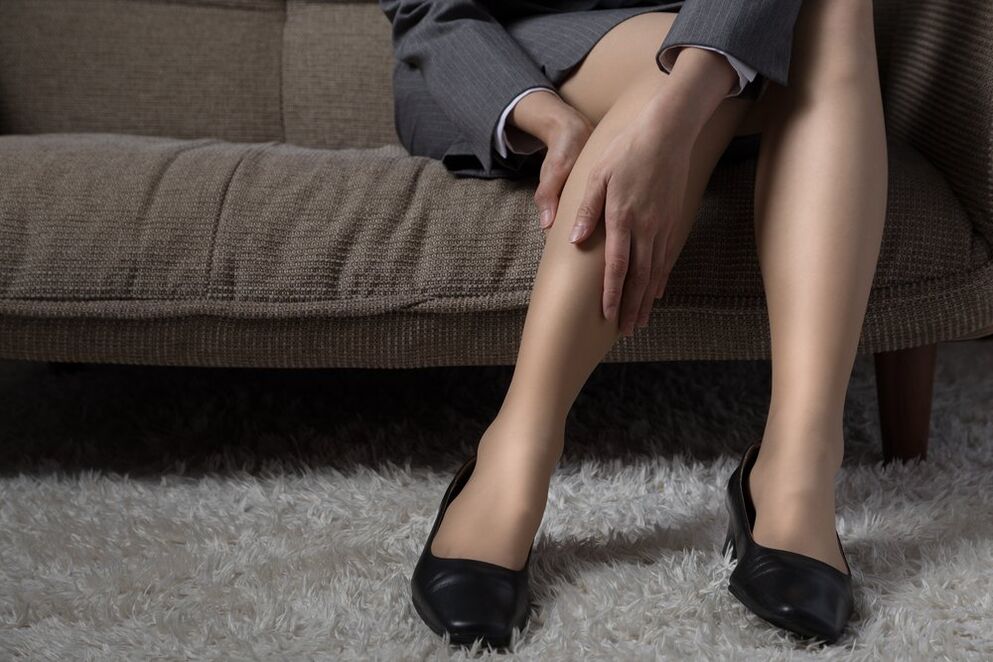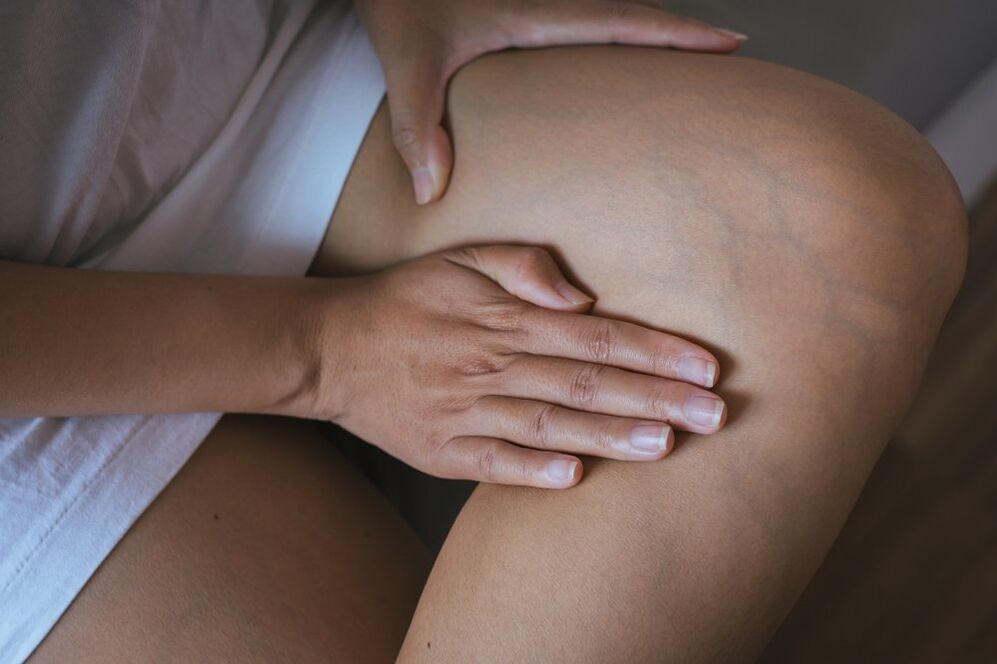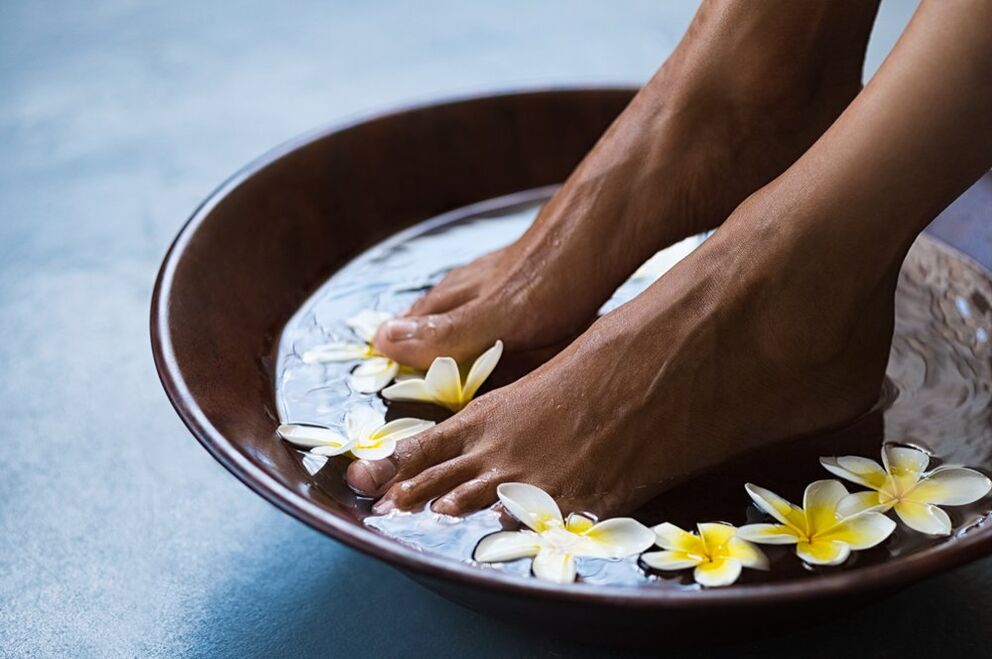
Varicose veins are one of the most common vascular lesions. Every third of women and one-fifth of powerful country representatives face such a problem.
This is a chronic disease characterized by disrupted blood outflow, which increases venous pressure. The blood vessels are equipped with valves that allow blood to flow only upwards so that it does not stagnate in the lower extremities. When the valve is disturbed, the blood flow becomes chaotic, after which the development of varicose veins in the legs occurs, in which case treatment should be taken immediately.
In the absence of prompt treatment of the disease, complications often arise and a diagnosis of thrombophlebitis occurs. There may even be a risk of death. The article will tell you how to prevent the condition of the lower extremity blood vessels from getting worse, forming knots on them, and preventing dangerous diseases.
Why do varicose veins occur?

There are many reasons for enlarged leg veins. Not only are they cosmetic flaws, but they indicate serious problems with blood flow. Factors that determine the development of varicose veins include:
- Being overweight, which can increase the load on the veins of the lower extremities;
- Addiction to bad habits, such as smoking, drinking, natural and man-made drugs;
- Heavy physical labor, resulting in overburdened legs;
- lots of tasty, unhealthy food;
- high frequency stress situations;
- genetic susceptibility;
- lack of power, which creates favorable conditions for stagnation of the vascular system and deterioration of blood circulation in the patient;
- Weakness of the leg muscles due to lack of desire to perform regular gymnastics exercises and activate the work of muscle fibers;
- Thin blood vessel walls.
These reasons create favorable conditions for the dilation of the great vessels of the lower extremities, and obvious swelling nodes appear.
Who needs varicose vein prevention and why?
Prevention refers to an effective way to prevent varicose veins. There are different categories of people at risk:
- Women over 30 who are in menopause;
- Foodies and sweet tooth lovers, high-fat foods, which can lead to weight gain;
- Professional representatives associated with standing for long periods of time, sitting in a chair in one position, or moving weight;
- Athletes whose primary load falls on their legs: weight lifters, runners, skaters, cyclists, rowers;
- Fashionistas who like to create a stylish and glamorous look with high heels, tight, body-hugging clothes;
- people with an inactive lifestyle;
Pregnant women are also at risk and may experience problems with swollen leg veins. The increase in hormone levels in the body, the development of the fetus results in an increase in the amount of blood that is transported through the veins. Preventing the disease will help prevent it from developing after childbirth. Prompt prevention of varicose veins can significantly improve the condition of the leg veins, strengthen the walls of the vessels, normalize blood circulation, and avoid unsightly pimples, as well as the formation of blood clots. Serious disease processes requiring urgent surgical treatment can be avoided.
How to prevent varicose veins?
Varicose vein prevention involves lifestyle changes and the implementation of activities that should become a habit for potential patients of a phlebologist. To avoid dangerous blood vessel disease, you should:
- exclude flour, sweets from the diet;
- Limit the use of salt, bacon, alcoholic beverages, coffee, bouillon;
- lead an active lifestyle;
- Industrial gymnastics in workplaces associated with prolonged standing and sitting;
- Prevent weightlifting beyond permitted standards;
- Adequate intake of vitamins, minerals and trace elements;
- Wear compression underwear at the first sign of varicose veins, with an elasticity rating determined by a phlebologist;
- Quit smoking, take a bath, sauna;
- Regular participation in gyms, fitness centers, swimming pools, swimming, water aerobics, which are considered the best activities to prevent varicose veins;
- Do the recommended exercises to improve circulation and available for home use;
- Apply traditional medicine recipes to improve the condition of the veins in the legs.
Ensuring that these simple recommendations are implemented can help eliminate the risk of developing dangerous diseases and the appearance of their characteristic signs.
Useful exercises to prevent leg veins from dilating and deforming
Simple exercises to prevent lower extremity vascular disease can improve blood circulation in body tissues, strengthen the walls of blood vessels, reduce congestion and prevent varicose veins. These include:
- Raise your legs and pull your toes toward you in a prone position on the floor at least 10 times.
- Do 5 sets of "Birch" exercises while holding your pelvis for 15-20 seconds.
- Lie on your back on the floor with your legs raised and do a circular motion with your feet in one direction and 10-15 reps on the other side.
- Raise your sock to the heels of your knees, at least 10 times on each leg, and sit on a chair.
- Sip, stand on tiptoe, and increase repetitions by 10-20.
- From a seated position, move the heels of each foot forward and back 15 times.
Traditional remedies for improving blood vessel conditions

To keep leg veins healthy at all times, alternative medicine enthusiasts recommend baths, lotions, rubs, and compresses prepared according to traditional medical formulas. The effectiveness of these methods has not been proven, and it is best to consult a doctor before using them. These methods include:
- Add a few drops of rose oil and rub the problem area with frozen parsley broth;
- Apply to the inflamed veins on the legs of green tomatoes, cut in half, until a burning sensation occurs;
- Calendula decoction made from the flowers of medicinal plants and water in a ratio of 1: 4;
- Ointment, consisting of 1 raw egg yolk, 1 tablespoon. l. Honey and 1 tbsp. l. Vodka, which should be applied to inflamed veins for several hours.
Remember, varicose veins are easier to prevent than cure!

















